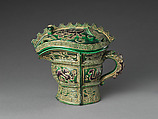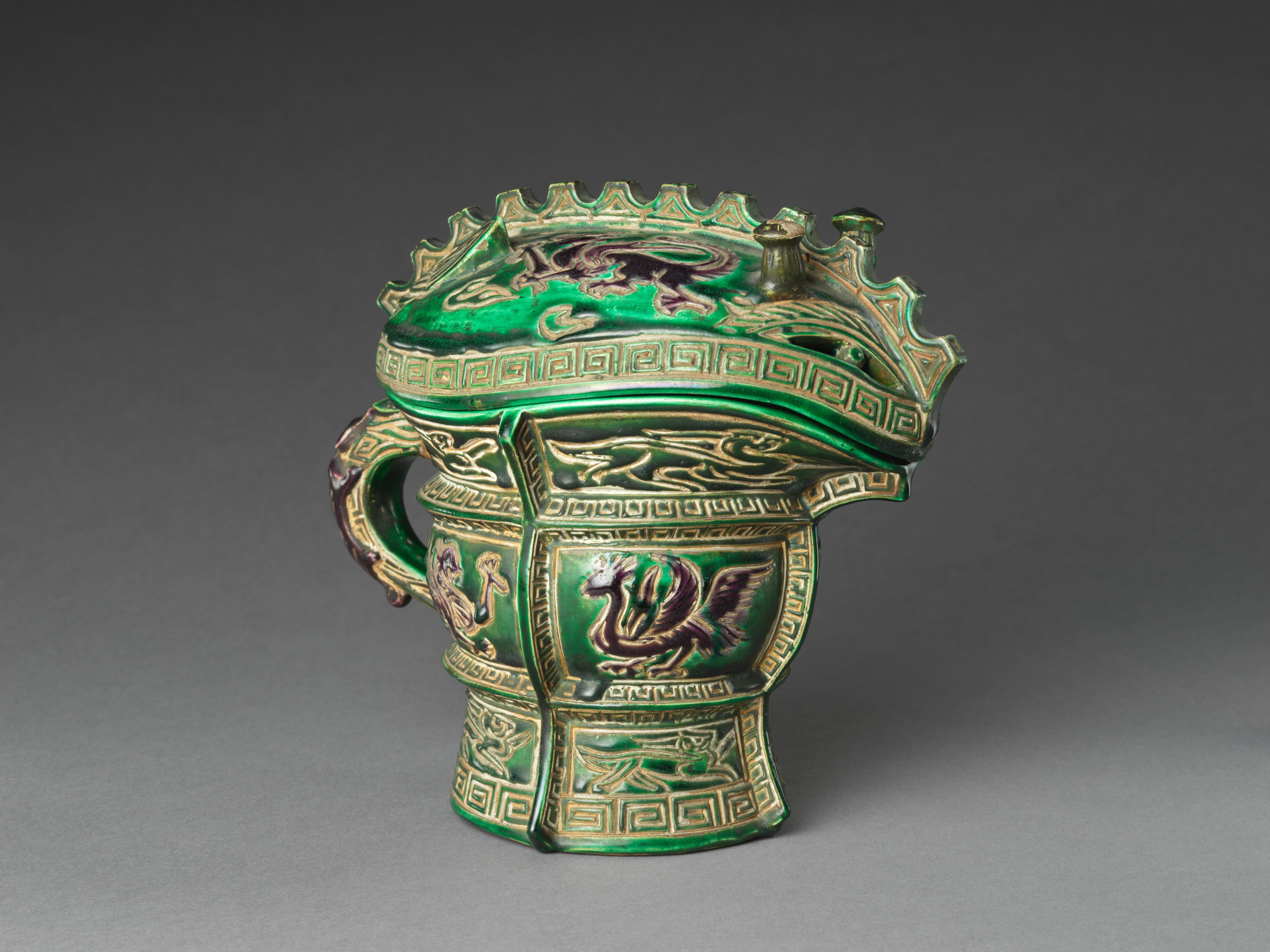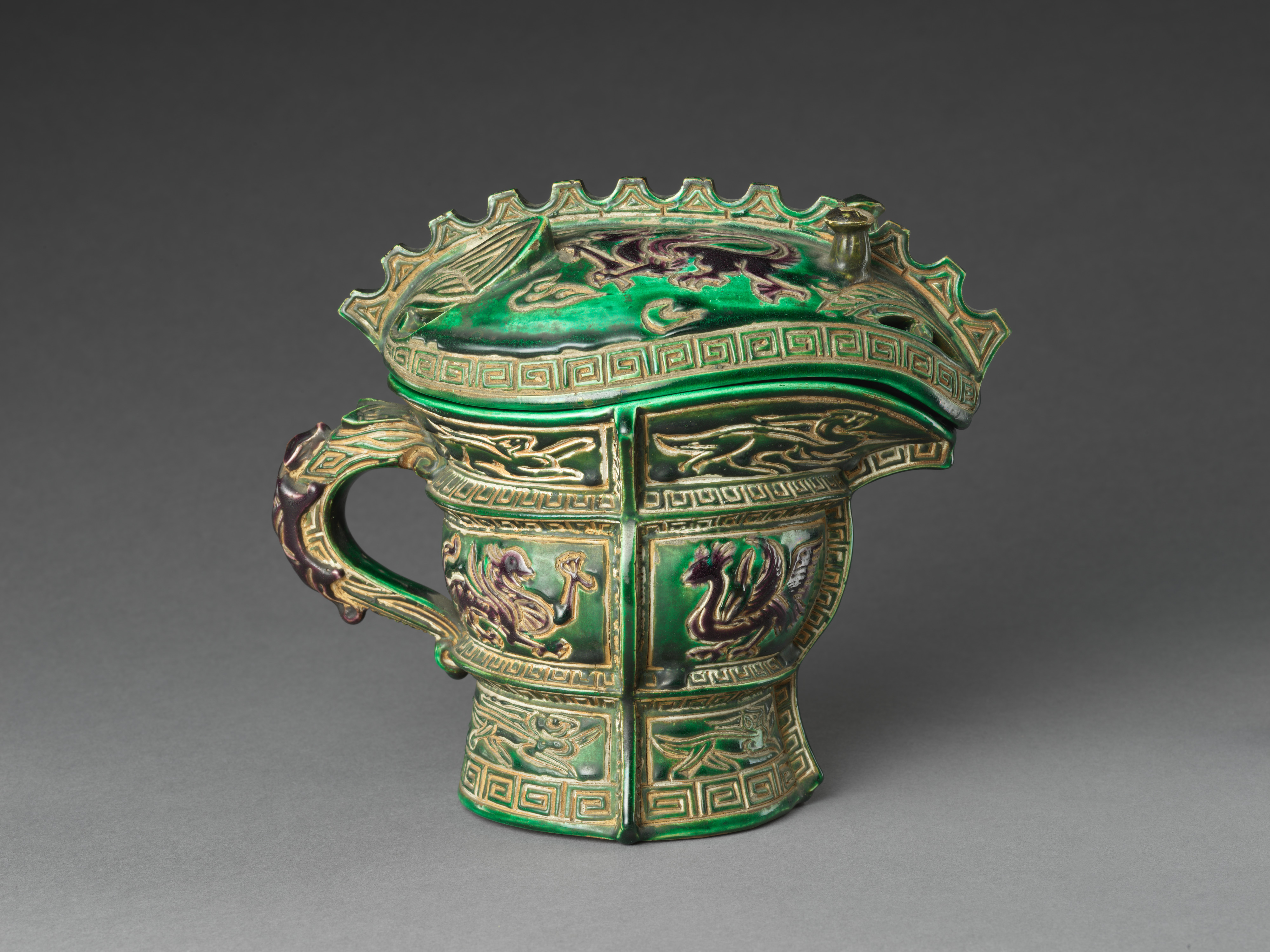Rhinoceros-Shaped Incense Burner in the Cochin (Kōchi) Style
Attributed to Okuda Eisen Japanese
Not on view
This rare work, attributed to Okuda Eisen, one of the most well-known potters of the late Edo period, is an example of revived interest in Chinese culture in eighteenth-century Kyoto. Its shape is based on ancient Chinese bronze spouted wine vessels (gong), and its decoration of dragons and other mythical animals is reminiscent of Chinese Cochin or Jiaozhi (Kōchi) ware. The only other known example of this type of refined censer is preserved at the Ninnaji Temple in Kyoto.
This image cannot be enlarged, viewed at full screen, or downloaded.
This artwork is meant to be viewed from right to left. Scroll left to view more.




